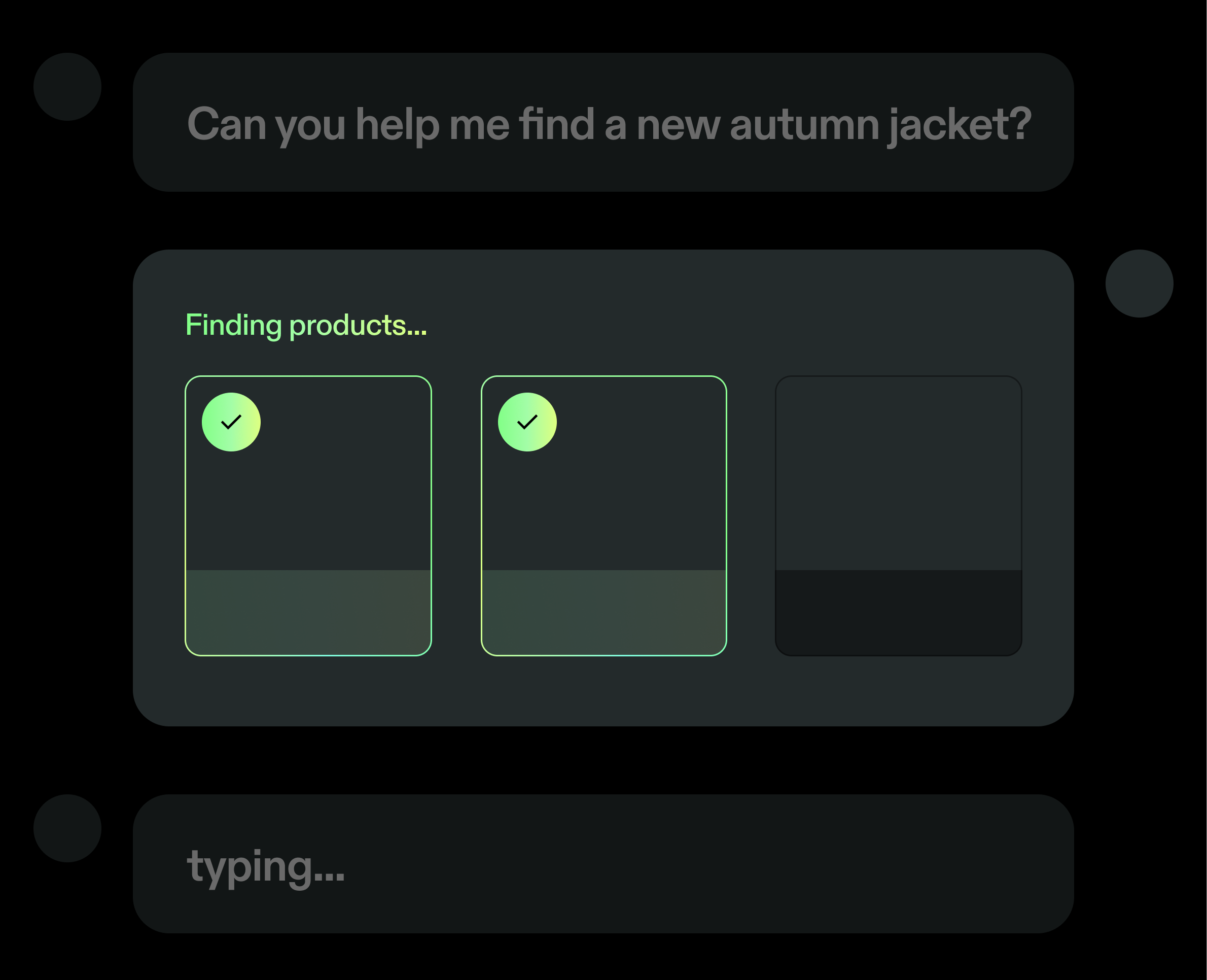Shopify provides a strong foundation for managing returns, including the ability to create return labels, restock items, and issue refunds. But as your business scales, your returns process needs to keep up.
Many growing DTC brands find that relying solely on native tools can introduce operational challenges, especially when managing higher volumes or more complex workflows.
That’s where purpose-built solutions like Swap Commerce come in. By integrating directly with Shopify, platforms like Swap can help brands automate, streamline, and optimize the entire post-purchase experience - turning returns into an opportunity for retention and revenue recovery.
In this guide, we’ll cover how returns work on Shopify, the key returns metrics to monitor, and how the right returns platform can help you scale with confidence.
How Do Returns Work on Shopify?
Shopify offers built-in features to support returns - merchants can manually create return labels, restock items, and issue refunds as needed. It’s a reliable setup for early-stage brands or those with lower return volumes.
However, for brands handling hundreds or thousands of orders a month, manual returns can quickly become resource-intensive. Shopify’s native tools don’t currently include a branded customer portal, automated exchange flows, or self-service returns, which can limit efficiency and customer satisfaction at scale.
To elevate the post-purchase experience and reduce operational friction, many brands choose to integrate a Shopify returns app that supports automation, real-time inventory visibility, and customizable return logic.
Challenges of Handling Returns on Shopify at Scale
Shopify provides a strong baseline for managing returns, but as your brand grows, so do the operational demands. What works for a brand shipping 100 orders a week doesn’t always scale when you’re processing thousands.
Here are some of the most common return challenges Shopify merchants face as they expand:
Manual Return Processing Increases Operational Overhead
Manually creating return labels, issuing refunds, and restocking items can be manageable early on - but it doesn’t scale. As order volumes increase, manual workflows slow down your operations team, increase the likelihood of errors, and create bottlenecks that impact both efficiency and customer satisfaction.
Without automation, your team spends more time on repetitive tasks and less time on strategy, growth, or improving customer experience.
No Self-Serve Portal Adds Pressure to Support Teams
Shopify’s native return flow doesn’t offer a branded, self-serve portal for customers. That means every return or exchange request has to go through your support team, leading to long email threads, customer frustration, and operational inefficiencies.
For brands aiming to scale with lean support teams, this becomes unsustainable. Customers today expect convenience - giving them the ability to start a return or exchange without contacting support is now table stakes.
Limited Real-Time Inventory Makes Exchanges Risky
Without integrated inventory visibility, offering real-time exchanges is difficult. Customers may try to exchange for an item that’s already out of stock, leading to refund delays and missed opportunities to retain revenue. In a scaled environment, this also creates internal confusion and complicates warehouse operations.
The lack of real-time data can cause a disconnect between customer expectations and fulfillment capabilities.
Minimal Return Data Leads to Missed Insights
Shopify provides limited visibility into return trends - like reasons for return, product-specific issues, or customer behavior patterns. Without structured return analytics, brands miss the opportunity to improve product quality, adjust sizing charts, refine marketing messaging, or address operational issues.
At scale, data-driven decisions are essential - and if you’re not learning from your returns, you’re leaving revenue on the table.
Lack of Automation Reduces Revenue Retention Opportunities
Automation isn’t just about speed - it’s about strategy. When returns aren’t automated, brands miss key touchpoints to recover revenue through upsells, exchanges, or store credits.
Automating refund rules, smart swap logic, and post-return product recommendations can dramatically improve retention and customer experience. Without these tools, returns become a cost - rather than a lever for growth.
Key Metrics to Track in Shopify Return Processes
Returns aren’t just a cost center - they’re a data goldmine. Here are the return metrics every Shopify brand should be tracking to optimise their processes:
Return Rate
This one’s your north star. Your return rate = returns ÷ total orders. High return rates might reveal product sizing issues, confusing descriptions, or shipping delays.
Exchange Rate
Swaps are the secret sauce of retained revenue. Track how often customers opt to exchange instead of a refund. A rising exchange rate = a healthier bottom line.
Average Refund Time
Time, as ever, is of the essence when it comes to returns. Track your average refund turnaround - it’s a direct input into customer loyalty and future LTV.
Top Return Reasons
Fit? Color? Quality? Shipping delays? Use structured return reasons to improve your product pages, operations, and future product development.
Customer Satisfaction Post-Return
A return is a crucial customer touchpoint. Use CSAT or NPS surveys post-return to gauge how customers felt about the process. Smooth returns can win repeat buyers.
Return Fraud Rate
It’s not fun to talk about, but it’s real. Track fraudulent returns - especially high-value items or suspicious activity. The right software can help flag this automatically and offer package protection for the ultimate customer experience.
Why You Need a Shopify Returns App
Shopify offers reliable foundational tools to help merchants manage returns, including refund processing and order restocking. For many early-stage brands, this level of functionality is enough.
But as your business grows, so does the complexity of your return operations - and that's where a dedicated Shopify returns app can make a meaningful difference.
With the right solution in place, customers can self-initiate returns or exchanges without needing to contact support, reducing friction and saving time for both parties.
Integrated inventory visibility ensures customers can instantly swap for the right item, improving satisfaction and minimizing lost sales.
Return apps also allow brands to automate workflows - such as rules for issuing refunds, granting store credits, or rejecting ineligible returns - bringing consistency and speed to the process.
The experience can be tailored to reflect your brand identity, from messaging to portal design, reinforcing trust at every post-purchase touchpoint.
And with built-in analytics, teams gain access to detailed insights that drive smarter decisions around products, policies, and customer service.
For brands aiming to scale efficiently while delivering a seamless customer experience, a return solution built for Shopify’s ecosystem is a smart investment - turning a typically reactive process into a proactive advantage.
A good Shopify returns app turns a logistics pain point into a customer loyalty engine. A great one? Well, keep reading.
How APIs Help Automate Returns on Shopify
Shopify API returns integrations enable brands to connect their return processes directly with inventory systems, order data, and fulfillment operations. This allows for a significantly more efficient and scalable approach to handling returns.
With API-powered workflows, returns and exchanges can be initiated automatically, reducing the need for manual intervention. Updates can be pushed to warehouses and third-party logistics providers in real time, ensuring accurate and timely fulfillment.
Brands can also surface live product recommendations during the return flow, encouraging exchanges and minimizing lost revenue. In addition, return data can be analyzed to identify unusual patterns or potential fraud, and refund events can be synced directly with accounting systems to maintain accurate financial records.
By leveraging APIs, Shopify brands can build a returns infrastructure that is not only streamlined and efficient, but also responsive to customer expectations and operational demands.
Why Swap Commerce is the Best Returns App for Shopify
Swap Commerce is the best Shopify returns app for brands that are scaling fast and want to keep their customers, margins, and sanity intact.
We help Shopify brands:
- Offer branded, global, self-serve returns portals
- Enable instant exchanges with real-time inventory
- Automate refunds, store credits, and swap logic
- Track return reasons, fraud risk, and revenue retention
- Handle cross-border returns without the headaches
Best of all? You can manage everything from one clean dashboard - no hefty tech stack required.
Ready to Upgrade Your Shopify Returns Process?
Returns don’t have to be a cost center. With Swap Commerce, they become a customer experience win and a revenue retention machine.
Whether you’re growing steadily or scaling fast, Swap Commerce gives you the infrastructure to handle returns with ease, not headaches.
Book a demo to explore our Shopify compatible returns solution today.






























